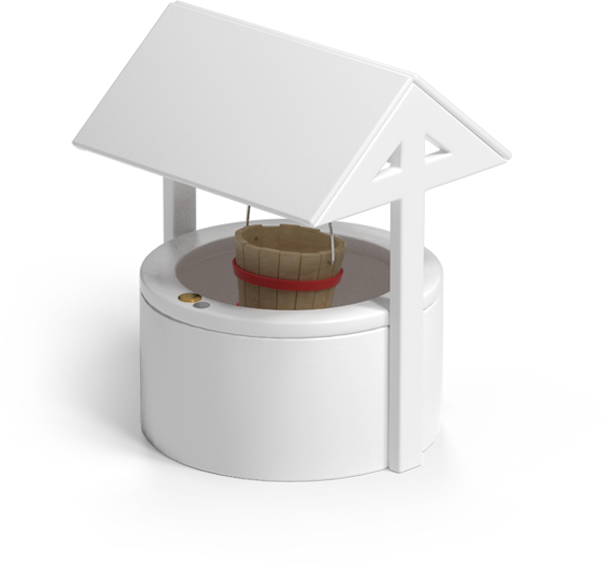What Are Asset Classes And Why Are They Important?
The investment world is far-reaching, both physically and in terms of the many ways in which you can earn rewards. You might be a professional investor trying to earn an income, or you may be interested in investing as a hobby or to build a nest-egg for retirement.
By Jon Howe4/28/21

What Are Asset Classes And Why Are They Important?
The investment world is far-reaching, both physically and in terms of the many ways in which you can earn rewards. You might be a professional investor trying to earn an income, or you may be interested in investing as a hobby or to build a nest-egg for retirement.
Regardless of whether you need the money from investing now or in the future, it is important that you understand what different types of investment are available and how these investments make money or lose money.
Different types of investment are influenced by different factors, and in truth, it is difficult to know with certainty how any of them are going to perform. But understanding what makes an investment’s value go up or down is fundamental to gaining a basic understanding of the art of investment.
A good starting point in building this understanding is looking at how types of investments are categorised and how each investment group behaves differently and requires different skills and knowledge to manage them. And how we categorise investments is by separating them into asset classes.
What is an asset class?
Put simply, an asset class is a grouping of similar types of investment; those that share similar characteristics and are comparable in terms of a rate of return, the element of risk, the type of performance metrics and the type of cash flow requirements to keep them running. They may also be regulated in the same way.
Different asset classes react differently to developments in the wider world, specifically news events or economic movements. For one asset class a news development may be good in terms of its value and return, but for another it may be bad.
Classifying investments in this way enables a financial advisor to assess your portfolio or your financial profile and build a selection of investments best suited to your personal and financial circumstances, your character and your ambitions.
The aim of this is to find a good balance in terms of your attitude to risk and the likelihood of your investments making a profit.
What are the main asset classes?
Traditionally there are four main asset classes, and each can then be broken down into sub-classes. These are equities, fixed income, cash equivalents, and alternative investments.
Equities
These are shares purchased on the stock market in the ownership of publicly-owned businesses. Generally speaking, their value goes up or down based on the public’s perception of the company’s performance.
Historically, this asset class provides the highest returns, but it is also the most volatile and unpredictable market, and hence represents the highest risk for an investor.
Shares can be in UK-based or international organisations, and they can also be start-up or multi-national businesses. You can practice diversification within this asset class by measuring growth potential against value, in other words, looking at whether shares have a big capability of price appreciation or whether they are a steady and stable investment and are likely to offer a smaller, but more dependable income stream.
Fixed income
This is any investment which pays the owner a fixed return each year and for a set number of years. This usually includes lending money to a company or the Government in return for interest on top of the repaying of the loan.
Typically these are called “bonds” or “annuities”. The value of these is traditionally more stable than stocks and shares, but their value can fluctuate in response to changes in the market interest rates.
Cash equivalents
On a very basic level this relates to the cash you have in bank accounts or savings such as cash ISAs, but also includes short-term liquid securities such as Government-issued securities.
These are the safest asset class as their value doesn’t fluctuate much, and so they represent the lowest risk in terms of an investment, however, consequently, they don’t provide the best returns when compared to other asset classes.
Alternative investments
This categorisation historically just included property, which includes both your residential home and any other investment properties. It can also include bonds that hold groups of property under their ownership.
Over time, this category has also expanded to include investments with similar levels of liquidity and market volatility, such as tangible commodities like pieces of art, precious metals and natural resources, or comparable investments such as hedge funds and futures.
Asset classes and liquidity
Most of these asset classes can be classed as ‘liquid’, in the sense that you can quickly sell them and turn that asset into cash. The main exception is property, which is classed as “illiquid” because it is seen more as a long term investment as it appreciates value over time in most cases, and also takes longer to sell, at least if you wish to realise its true value.
Indeed, most of the ‘alternative investments’ are harder to sell as they require a specific buyer to be found, and hence are less liquid.
However, the level of ‘liquidity’ does not necessarily correlate with an asset class offering a better or worse return, it just takes longer to access the cash.
That might suit some investors perfectly well, but not others, and as we will look at later, a more stable, long term investment will sit well in a portfolio of investments that includes some more aggressive and higher risk asset classes too.
Why is it important to have a mix of asset classes in your investment portfolio?
Owning investments in different asset classes – known as diversification – is general good practice that all financial advisors would recommend, and help you to achieve. This can reduce your portfolio’s overall volatility but it also has other advantages.
If you have all your investments in one asset class, this could put excessive demands on your cash flow, it can also mean you achieve fewer returns overall, as all your investments will roughly perform the same (alternatively, of course, there is a chance that they will all perform better than other asset classes).
Balance of liquidity
Having all your investments in one asset class also limits how quickly you can access your cash. You may find that all your investments have very little liquidity and that may become a problem if you need access to cash quickly for an unforeseeable reason.
A balance of both long and short term investments is ideal, because, on the other hand, if all your investments are very liquid, this may become difficult to manage and you may find yourself as a very active investor when you actually wanted to be a passive one.
The importance of asset allocation
Perhaps the most important factor with regards to diversification, however, is risk and how you manage your portfolio to prevent being overexposed to possible market fluctuations. The term for controlling this is known as “asset allocation”.
This is essentially the percentage of each asset class you choose to have in your portfolio. This will roughly reflect your financial circumstances, your character, your ambitions and your attitude to risk.
You can build a high risk portfolio by having a higher percentage of stocks and shares in your group of investments, for example, or you can put together a low risk portfolio by concentrating on cash equivalents or fixed income securities.
Finding the right balance
The art is in finding a good balance that reflects your needs and offers a healthy range of returns and risk levels. A good financial advisor will be able to do this for you and you can also invest in ready-made portfolios which offer a percentage allocation of asset classes according to your needs or ambitions.
Technically, a pension fund is an automatic allocation of asset classes in this sense, in that people usually have no say or influence in how their money is invested. This is known as a ‘default fund’, whereby you trust the fund administrator to invest the money on your behalf.
Investment strategy
Ultimately, you need to pick a strategy and stick to it in terms of asset class allocation, however, as you get older or your personal circumstances change, you may wish to alter this allocation. It is perfectly understandable for attitudes to risk to change over the long term, and for people to feel more cautious about exposing too much of their life savings to a higher risk, as they get older. In this case, age can dictate that you change your percentage allocation and diversify your investment in a different way.
How is the investment market changing with regards to asset classes?
Earlier in this article we described the four ‘traditional’ asset classes and how they are distinctly different from each other, but also how different investments share familiar characteristics within each category. This has made it easier to build a diverse investment portfolio that has a comfortable balance of risk and reward.
However, increasingly, the investment market is offering new products that have begun to blur the edges between the traditional asset classes and therefore don’t fit neatly into one single class.
A good example of this is property crowdfunding, which takes some elements of:
- Equities – you are buying a share in a property along with other crowdfunders and you are rewarded via that same share percentage.
- Fixed-rate income – you receive a regular, fixed amount of income via the rental yield %.
- Property – you can also earn capital appreciation through the property selling on the normal property market.
In addition to this, property crowdfunding and the typical model proposed to crowd investors, has brought ‘property’ into the realms of being a more liquid asset. You can buy and sell your shares in a property crowdfunding scheme more easily than staging a house for sale, and therefore, in theory, get your hands on ready cash.
The various other crowdfunding models such as peer-to-peer lending also show that the distinctive lines dividing asset classes are beginning to change. And while this demands that investor vigilance and expert guidance is more important than ever, it also shows that there are new and very interesting ways to build a diverse inv[estment portfolio, and that this is a great time to get involved in it.
The importance of asset classes
Being able to categorise different investments provides some clarity and enables an investor to build an investment strategy. Maintaining an eye on your overall ambitions is critical in the investment sector, and if we were just able to select from an assembled mass of different investment products it would be harder to monitor performances, maintain the investment in the long term and also maintain a visibility on your exit strategy.
This is extremely important when considering a portfolio of investments, because knowing when you have achieved a goal or identifying a sign that you are reaching an ‘overexposure’ point, is vital in being able to manage your investments.
Asset classes, and building a portfolio around them, allow you to do that, and despite the emergence of new, barrier-defying investment products, this is a long-established and proven way to build a balanced and ultimately successful investment portfolio.
Take a look at our other articles




